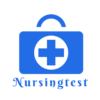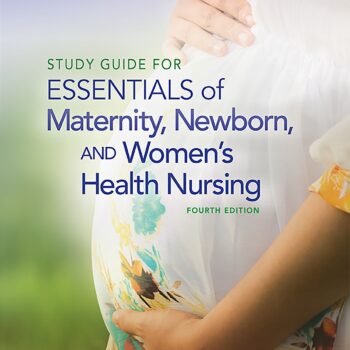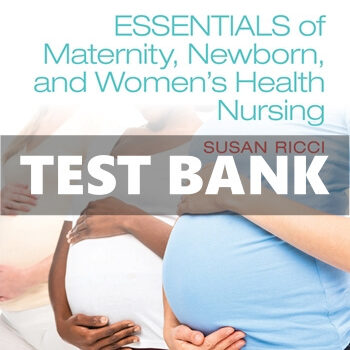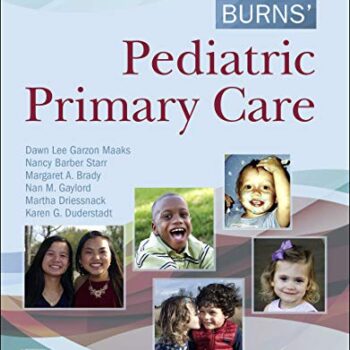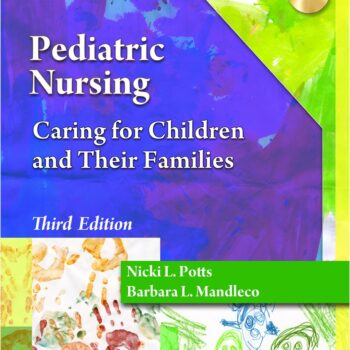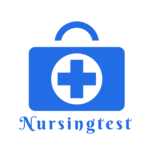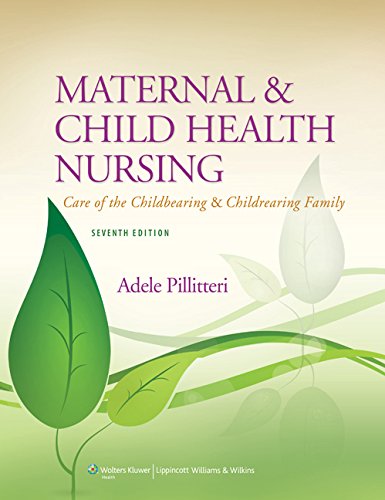
Test Bank for Maternal and Child Health Nursing 7th Edition By Pillitteri Pillitteri
Original price was: $55.00.$25.00Current price is: $25.00.
Digital item No Waiting Time Instant DownloadISBN-10: 1451187904 ISBN-13: 978-1451187908Publisher: Lippincott Williams& Wilkins; 7th editionAuthor: R. N. Pillitteri, Adele, Ph. D.
Studying maternal and child health nursing is made easier with the Test Bank for Maternal and Child Health Nursing 7th Edition by Pillitteri Pillitteri if you are preparing for any examinations. It is made to help students and professionals by integrating significant themes of care such as family-centered care, health promotion, and evidence-based practice.
What is Included in the Test Bank?
Question Banks consist of MCQs, case study designs as well as critical evaluation questions. These questions assess an individual’s understanding of real-life situations such as how a family copes and how pediatric and maternal care patients are managed. It also stresses the importance of learning how to manage risks and make decisions to facilitate the understanding of the practices currently used in nursing education.
Some key topics include:
- Family Health Roles and Challenges: They examine the roles of parents who work and consider how caregivers balance family issues with the needs that arise during a hospital stay.
- Developmental Care: They outline how child development can be enhanced through immunizations, socialization, and injury prevention approaches.
- Care for Diverse Family Structures: They support the needs of different family formats including single or divorced families and parents living with chronic illness in a child caregiver.
Why Use this Test Bank?
This test bank, in essence, deserves to be used since it is tailored to specific topics that will occur in real-life clinical situations. It helps boost confidence by:
- Equipping with case-based questions that show how a nurse would handle different scenarios in reality.
- Testing the understanding through conceptualization-based activities.
- Utilizing interprofessional care maps and care planning boxes that help nursing students plan the care they are going to provide, step by step.
How Does It Benefit Your Learning?
By taking the Test Bank of this edition, you will readily be able to access;
- Evidence-based practice test points: This equity highlights cross-cutting issues from the most up-to-date research related to maternal and child nursing.
- Care Planning Skills: The resource equips nursing students with the ability to structure care plans that focus on the patient and the patient’s family regarding outcomes.
This test bank provides a broad-based approach to undertaking examinations and clinical practice that instills mastery in placement students dealing with maternal and child health nursing. It suits nursing students who are confident enough to explore features in more detail and improve patient care.
This edition can be downloaded instantly, via different channels making it easy for you to get started on your studies. This resource, in case you are trying to improve your skills in this professional area, is recommended.
Sample chapter 2
|
1. |
A school-age child, a member of a family with a mother, father, and toddler, is hospitalized. The father is employed outside of the home, and the mother stays at home with the other child. The mother is challenged with supporting both children at this time. What should the nurse suggest to the mother? |
|
A) |
Place the toddler in daycare. |
|
B) |
Suggest the father take time off to help. |
|
C) |
Ask extended family members to help out during this time. |
|
D) |
Visit with the patient after the father comes home from work. |
|
Ans: |
C |
|
Feedback: |
|
|
In a time of crisis, the nuclear family is challenged because there are few family members to share the burden or look at a problem objectively. The nurse should suggest that the family locate and reach out to support people in their extended family during a crisis. Placing the toddler in daycare and suggesting the father take time off to help might negatively impact the family’s financial situation and would be inappropriate for the nurse to suggest these options. The option of visiting the school-age child after the father comes home from work may not support the child adequately during the hospitalization. |
|
2. |
A preadolescent patient, a member of a single-parent family, has abdominal pain and the healthcare provider suspects that an appendectomy might need to be performed. The patient’s father is asking for a second opinion, whereas the mother tells the nurse to do whatever needs to be done to help the patient. What does the nurse need to assess before moving forward with planning care for this patient? |
|
A) |
Permission to miss school |
|
B) |
Identify the custodial parent |
|
C) |
The type of health insurance |
|
D) |
Plans for help upon discharge |
|
Ans: |
B |
|
Feedback: |
|
|
The nurse needs to identify who is the custodial parent. This is especially important when consent forms for care need to be signed. Once this information is obtained, the nurse needs to document it in the patient’s medical record. Permission to miss school, health insurance, and needs after discharge do not necessarily need to be assessed before planning care for the patient. |
|
3. |
During a family assessment, the nurse learns that the male parent smokes. What should the nurse do with this information to support the 2020 National Health Goals? |
|
A) |
Document the information in the medical record. |
|
B) |
Explain that smoking can cause long-term health problems. |
|
C) |
Ask if the male parent has made any efforts towards smoking cessation. |
|
D) |
Suggest that smoking be done away from other family members because of health concerns. |
|
Ans: |
C |
|
Feedback: |
|
|
One of the 2020 National Health Goals is to increase the percentage of adult smokers aged 18 years and older attempting to stop smoking from 48.3% to 80%. To support this goal, the nurse should ask the parent if any efforts toward smoking cessation have been taken. The nurse needs to do more than just document the information. Explaining that smoking can cause long-term health problems may not be an effective strategy to encourage parents to stop smoking. Suggesting that smoking be done away from other family members is assuming that the parent is smoking with the family members present. |
|
4. |
During a family assessment, it is identified that the mother is unemployed but stays at home to prepare meals, monitor medication doses, and comfort the children with emotional issues. The father works outside of the home and pays the bills. Which terms should the nurse use to document the role of the father in this family? (Select all that apply.) |
|
A) |
Provider |
|
B) |
Nurturer |
|
C) |
Culture bearer |
|
D) |
Health manager |
|
E) |
Financial manager |
|
Ans: |
A, E |
|
Feedback: |
|
|
The provider is considered the person who brings home the money, which would be the father because he works outside of the home. The person who pays the bills is considered the financial manager. The nurturer would be the one who makes the meals or the mother in this situation. The health manager is also the mother because she is the person who monitors medication doses. There is no evidence to support that either the mother or father functions in the role of culture bearer. |
|
5. |
The nurse is completing an assessment of a family with a preschool-age child. Which areas should the nurse focus on when instructing the parents on tasks needed during this stage of family development? (Select all that apply.) |
|
A) |
Prevention of accidental injuries |
|
B) |
Importance of child’s socialization |
|
C) |
Promoting health through immunizations |
|
D) |
Socialization through sporting events |
|
E) |
Need for dental care and health assessments |
|
Ans: |
A, B |
|
Feedback: |
|
|
In the stage of family development with a preschool-age child, the parent’s tasks are to prevent accidental injuries and begin the child’s socialization. Socialization through sporting events, promoting health through immunizations, and the need for dental care and health assessments are family responsibilities for the family with a school-age child. |
|
6. |
The nurse is caring for a school-age child whose mother works two jobs, whose father is away from the home during the week truck driving, and whose older brother has a part-time after-school job. The child will be hospitalized for several weeks for chemotherapy treatments. Which nursing diagnosis should the nurse identify as being appropriate for this family? |
|
A) |
Impaired parenting |
|
B) |
Parental role conflict |
|
C) |
Health-seeking behaviors |
|
D) |
Readiness for enhanced family coping |
|
Ans: |
B |
|
Feedback: |
|
|
The diagnosis of parental role conflict would address the parents’ work responsibilities and schedules and the relationship of work to the child’s extended hospitalization. There is no evidence to suggest that there is impaired parenting, health-seeking behaviors, or readiness for enhanced family coping. |
|
7. |
The nurse is evaluating outcomes about a family’s ability to care for an adolescent child who is recovering from a spinal cord injury. Which statements indicate that this family is transitioning healthily? |
|
A) |
The patient states the injuries “messed up” the rest of his life. |
|
B) |
The mother states the need to have a break at least once per week. |
|
C) |
The patient states fewer episodes of nausea with changing position. |
|
D) |
The father states the child’s accident has brought the family closer together. |
|
E) |
The mother states the ability to provide care for the child is becoming easier. |
|
Ans: |
D, E |
|
Feedback: |
|
|
The statements that indicate that the family can care for an adolescent child who is recovering from a spinal cord injury include the father’s statement about the family being brought closer together and the mother’s statement about the care being easier to provide. The patient’s two statements do not address the family’s ability to care for the patient. The mother’s statement about needing a break does not measure if the family can care for the adolescent patient. |
|
8. |
The nurse is planning outcomes of care for a family whose infant was born with a birth defect. Which outcome statement would be the most appropriate for this family? |
|
A) |
The parents will seek information regarding the birth defect. |
|
B) |
The parents will limit involvement with extended family members. |
|
C) |
The mother will return to work after 6 weeks as planned before the delivery. |
|
D) |
The father will learn to care for the infant so that the mother can return to work. |
|
Ans: |
A |
|
Feedback: |
|
|
The family has a new member who has a birth defect. The outcome statement that would be most appropriate for the family would be for the parents to seek out information about the birth defect. The parents limiting involvement with extended family members may indicate that the family will be isolated. The father learning to care for the infant so that the mother can return to work does not take into consideration if the father is employed. The mother planning to return to work after 6 weeks as planned before the delivery does not take into consideration the newborn’s health care needs. |
|
9. |
The nurse is visiting a family with a toddler and school-age child. Which teaching should the nurse provide to the parents that would be appropriate for both children? |
|
A) |
Increased freedom |
|
B) |
Actions to ensure safety |
|
C) |
Encourage independent thinking |
|
D) |
Importance of school experiences |
|
Ans: |
B |
|
Feedback: |
|
|
The teaching that would support both of the children’s needs would be to focus on actions to ensure safety. Increased freedom would be appropriate for the adolescent. Encouraging independent thinking would be appropriate for the young adult. The importance of school experiences would be appropriate for the school-age child but not for the toddler. |
|
10. |
A recently separated mother is overwhelmed with caring for three children under the age of 5 years. The oldest child has been recently diagnosed with muscular dystrophy. Which health care providers should the nurse consult to help the mother? (Select all that apply.) |
|
A) |
Dietician |
|
B) |
Physician |
|
C) |
Pharmacist |
|
D) |
Social worker |
|
E) |
Physical therapist |
|
Ans: |
D, E |
